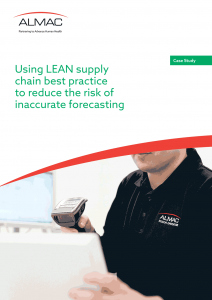

Using LEAN supply chain best practice to reduce the risk of inaccurate forecasting
In an ideal world, patient recruitment forecasts are accurate and continuously monitored to result in an efficient clinical supply chain. Yet, the reality often paints a very different picture, with inaccurate forecasting creating the threat of stockouts and study disruptions.
This was the case for one, multinational pharmaceutical company that was faced with unreliable drug demand forecasts during a global Phase III study to assess the efficacy and safety of a preventative treatment for a debilitating neurological condition.
Download our latest Case Study to find out how Almac Clinical Services used a pooled supply inventory strategy and LEAN approach to avoid stockouts and ensure clinical sites received the right drug quantities needed to support all patients.
If you require any further information, please contact Almac Clinical Services.


